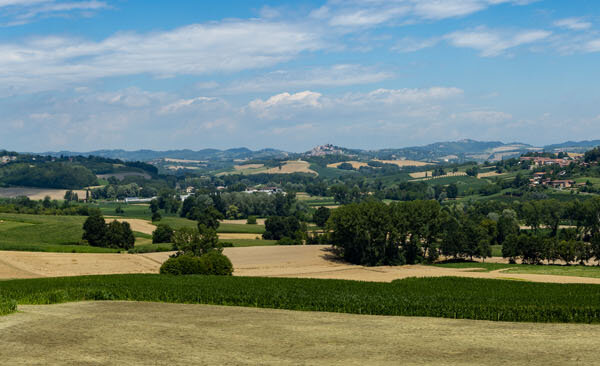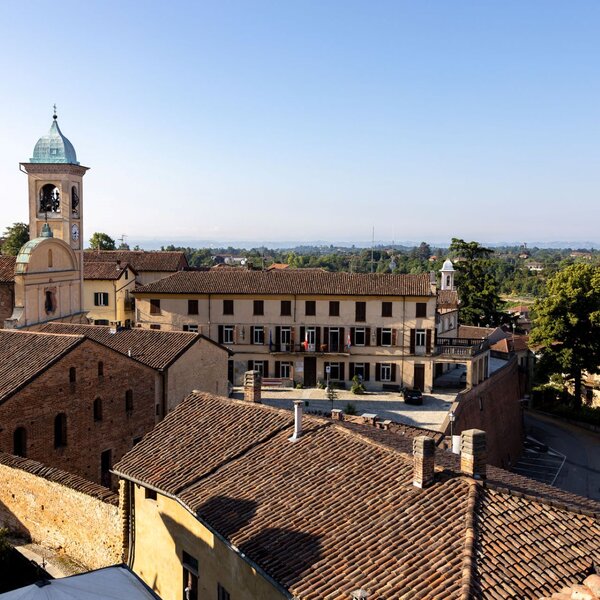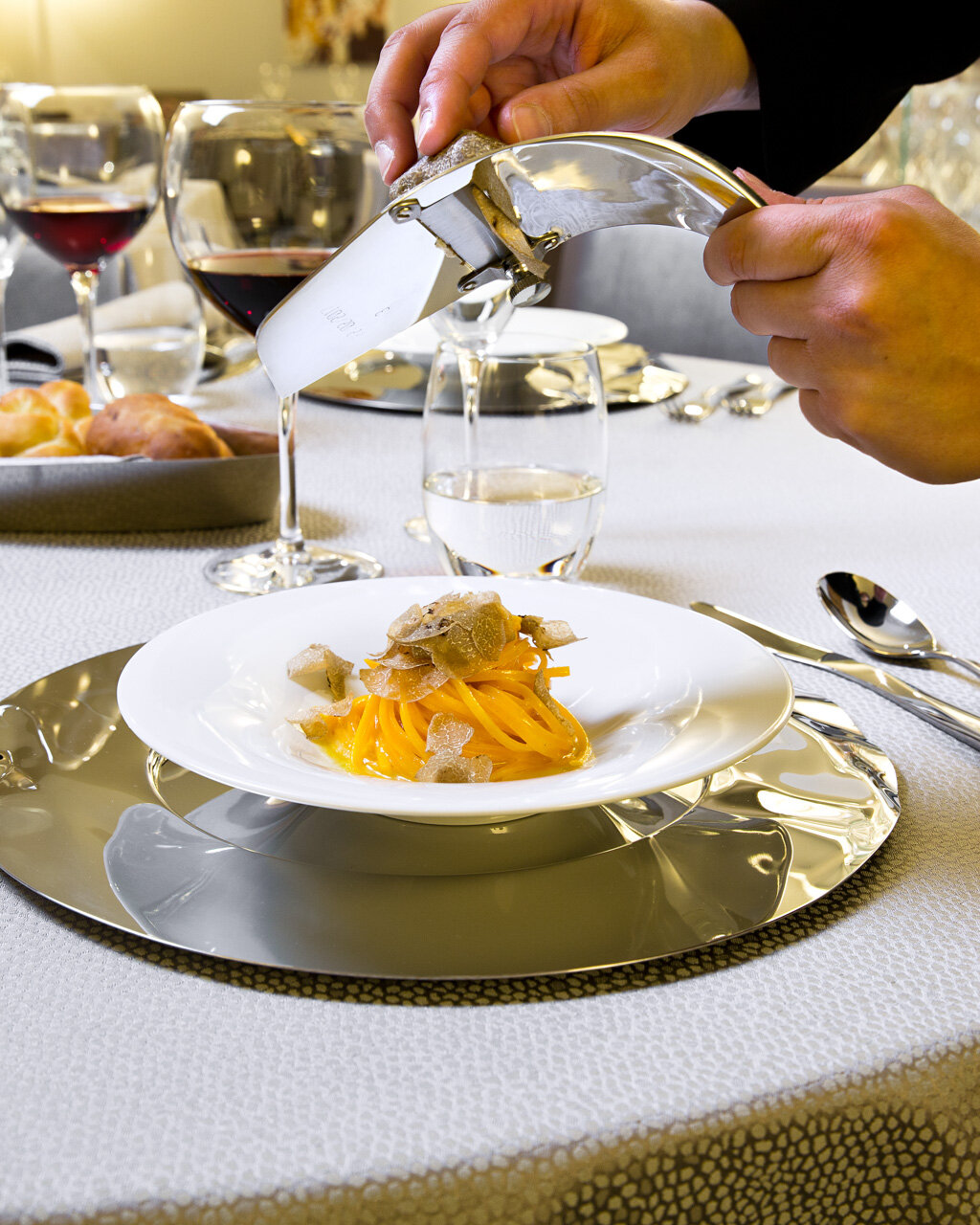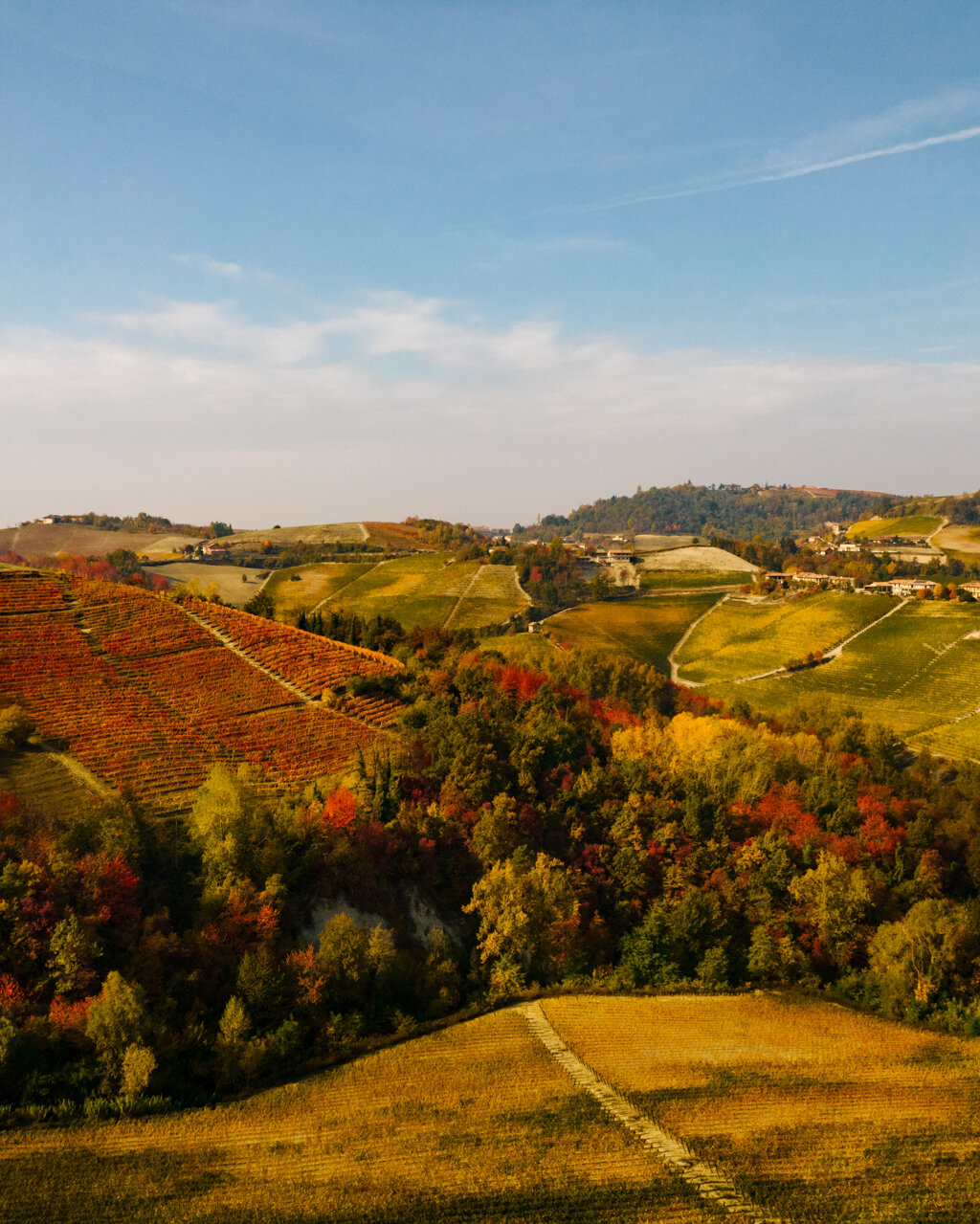In Castagnole Monferrato, the treasures are all enclosed within the walls of the Ricetto (the medieval fortification known as la Miraja) just beyond the big parish Church of San Martino: from the theatre to the beautiful mediaeval houses on which 17th-century farmhouses and ambitious late-19th-century buildings are nestled. The ruins of the former castle have been replaced by the charming neo-Gothic space of the former kindergarten with the old seat of the Philharmonic Orchestra next to it. Worthy of mention is also the Mercantile, a Baroque villa now open to the public, with an Italian-style labyrinth garden.
From the village square, on the other hand, the slender 18th-century bell tower of the now lost Church of San Sebastiano stands out, the symbol of the village, along with the Finocchini, delicious aniseed biscuits that you should definitely try. We should also mention the sensitive 20th-century painter Massimo Quaglino and the small Church with its Romanesque apse in Borgo Maddalena (towards Valenzani).
Viarigi definitely deserves a stroll through stairways and vaults to discover views, courtyards and doorways, surrounded by a flood of red tiled roofs. The beautiful 14th-century parish Church of Sant'Agata, with its 17th-century façade, preserves a triptych of the Madonna by Gandolfino da Roreto (d'Asti) along with Macrino, one of Piedmont's most important Renaissance painters. The Church of San Silverio is also worth a visit, with its Greek-cross plan and alternating two-colour ashlars, overlooked by a medieval palace, one of the oldest in the village.
All around, as far as the eye can see, there are more woods than vineyards. Just above the woods, the tiny 11th-century Church of San Marziano stands out. It is the last (or first) country Church on the Via Francigena of the area, with its refined Romanesque architecture of yellow sandstone and splendid, isolated viewpoint.
The old parish Church has a bombastic staircase and columned façade and, although uncommon in these areas, it has a remarkable scenic impact. However, Montemagno's secrets are mostly well hidden... such as the frescoes of Santa Maria della Cava (1491), among the most important in the Asti area along with those of Sant'Andrea a Montiglio (it. Romanesque in and around Montechiaro d’Asti), or the charming ruins of the Romanesque Church of SS Vittore e Corona (12th century).
Find out more

Romanico Da Montechiaro
Find out moreEvery road that branches off from Montemagno provides a fully immersive experience in a rural landscape bordering on reality. Next, the route takes us towards Grana Monferrato (it. Moncalvo, Italy's Smallest Town), a compulsory junction for Moncalvo (it. Lower Monferrato of Moncalvo) and a panoramic viewpoint over the other Ruché hills. The village is entirely clustered around the imposing parish Church of the Assunta (1776), whose altarpiece is the Madonna col Bambino e Santi (1595), one of Moncalvo's most beautiful works of art.
Find out more

Lower Monferrato of Moncalvo
Find out moreThe road heading towards Calliano Monferrato takes us to the San Desiderio crossroads, the ancient border between Monferrato and Astesana, which allows us to make a U-turn to go along the ridge which from San Pietro (where we can take a nice shortcut to Castagnole Monferrato) descends to the main road of Scurzolengo. There is in fact only one road which runs through the whole village and there are just a few streets in the centre built around the imposing Castle. Actually, the grim castle also incorporates the parish Church which further increases its overwhelming size.
The surroundings are by far the most charming of this itinerary, whether you get to the remote little Church of Sant'Evasio, immersed in the Miravalle woods, or run along the parallel Castellazzo ridge, or take the other road leading to Scurzolengo: a wide tour which, from Monterovere, seems to have been created specifically to fill your eyes with these unspoilt views.
From here, passing through Cornapò, you reach Migliandolo (another municipality, now an "independent" hamlet of Portacomaro), a peaceful country village that you go through in slow motion to descend on the other side into the Valenzani valley, from which you return to Castagnole Monferrato in a few bends.
PLEASE NOTE: Responsibility for the maintenance and practicability of the various trails lies with the municipalities where the routes are located. The Tourist Board, therefore, cannot be held responsible for any inefficiencies, but is willingly available to collect your reports so that they can be forwarded to the authorities concerned.


